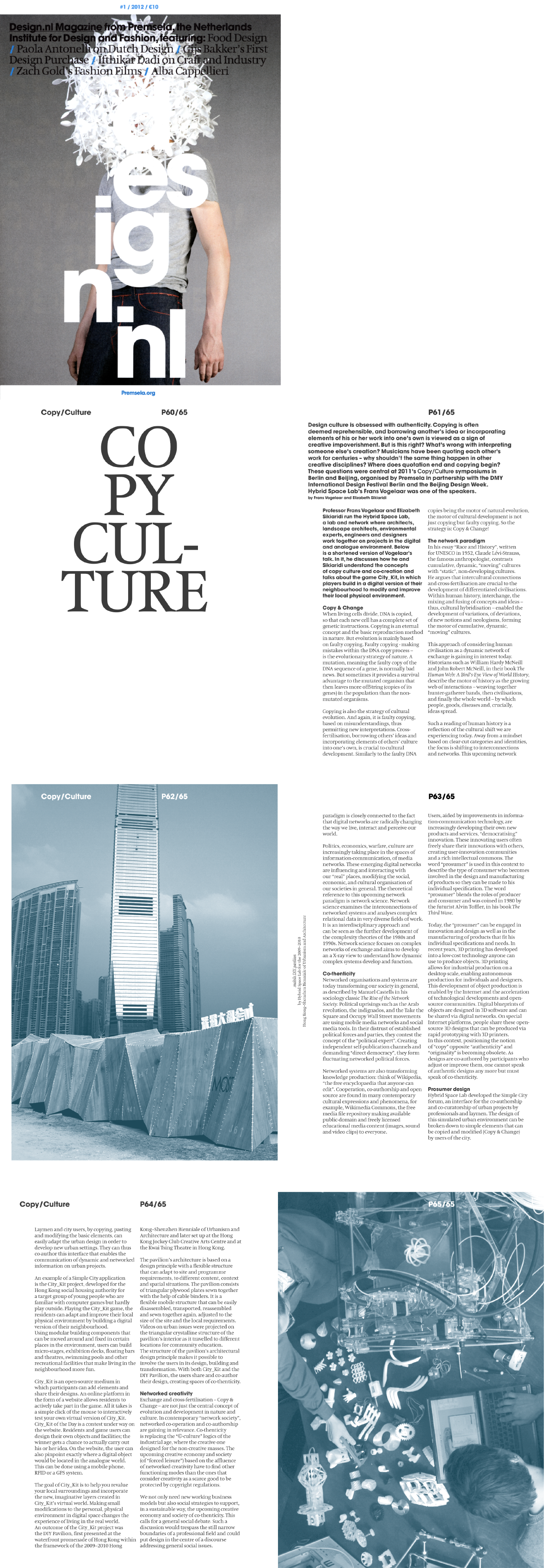The Copy/Culture Symposium Istanbul, presented by Premsela, the Netherlands Institute for Design and Fashion in corporation with SALT examines the implications of copying, open source and sampling on the design trade and profession.
Lecture Symposium Copying Open Source Sampling @ SALT, Premsela, Netherlands Institute for Design and Fashion, Instanbul, 28 April 2012
Design
Culture
Lectures
On Saturday, April 28th, the third symposium in the Copy / Culture series will take place in SALT Galata in Istanbul, with seven speakers from very different fields. The London-based architect and researcher Tomas Klassnik will discuss the subject of architecture in architecture as architectural re-enactments. Professor and architect Atilla Yücel from Turkey adds a story about ‘The copy, the type and the metaphor’. Looking at Istanbul, Professor Elizabeth Sikiaridi of the Hybrid Space Lab in Berlin will engage in copying and the hybrid culture of the city. Designer Aslı Kıyak Ingin from Istanbul is also presenting a presentation on ‘Open Source Design and Copy as Commons: What Istanbul Can Offer Us’. Urban Image Theorist Fei Wang from China will then talk about Shanzhai design and Shanzhai architecture. Shanzhai is the (often illegal) Chinese imitation art of well-known Western brands. Lawyer and copyright specialist Fulco Blokhuis will talk about “Copyright or the Right to Copy?” And master spokesman Geert Jan Jansen will tell about copying and forgery. Jansen became world famous with his passing art … and became a popular painter now with his own name.
Design culture is obsessed with authenticity. The tension that immediately builds when people start to speak about copying demonstrates its current relevance and explosive potential. It is seen as something reprehensible – a fraudulent violation of taste and morals.
Often, only two kinds of copying are talked about: on the one hand, imitating an object as closely as possible and then pawning the fake off as the original, i.e., falsification, and on the other, copying to mask one’s own creative poverty. The latter act is obviously open to interpretation – for example, where does quotation end and copying begin? In music, people have quoted each other’s work for centuries. So why not in design?
In fact, copying can be a creative act. In the Middle Ages, it was often the only way to disseminate artistic products (think of handwritten books). It frequently led not just to facsimiles but to small innovations, and the copies became originals in their own right. And copying is still used as a teaching method in some Asian cultures. In Japan, for example, pupils learn trades by copying the work of masters. In our culture, copying as a form of quotation has recently taken off in subculture – in music first of all, and slowly but surely in design as well.
Copying is seen as a problem in business. The cheap bootlegging of name-brand products in non-western countries for western markets is only the tip of the iceberg. Often, people make money through the domestic marketing of borrowed ideas under brand names unheard of in the West. But copying and copyright breaches aren’t only a problem at the level of global economics. Businesses and creators also seek to protect their creative, technical and technological property – rightly so, as large sums are often invested in their development. Protecting rights buys time to earn that money back.
But is intellectual property protection still appropriate in an age when digital distribution and teamwork often make it difficult to identify a product’s author, maker or inventor? And in a culture in which quotation and copying have long led to enrichment and innovation, shouldn’t we strive for a new attitude towards copying and copyright?
related PROJECTS
related NEWS
